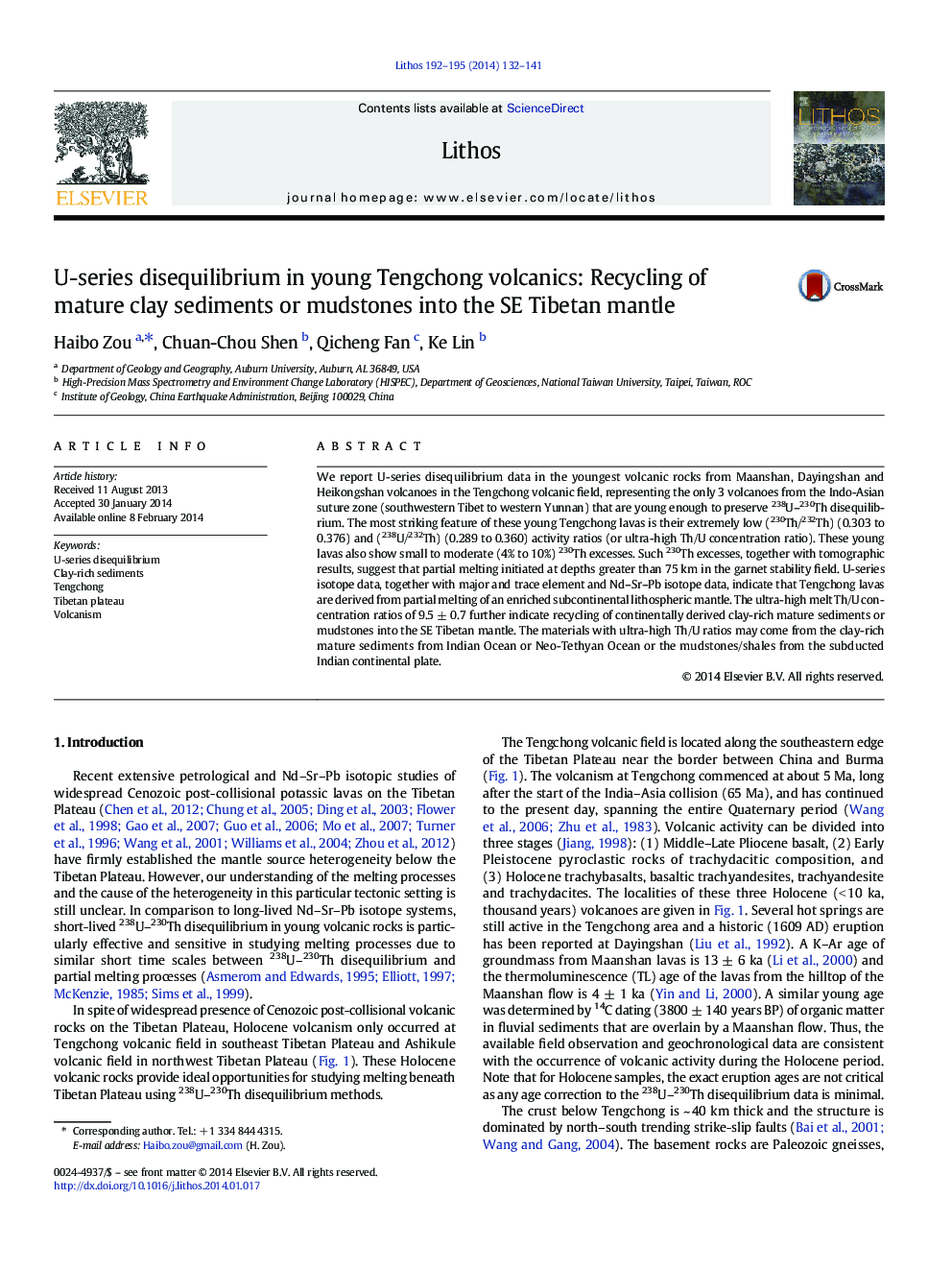| کد مقاله | کد نشریه | سال انتشار | مقاله انگلیسی | نسخه تمام متن |
|---|---|---|---|---|
| 4716046 | 1638679 | 2014 | 10 صفحه PDF | دانلود رایگان |

• We report U-series isotopes in young volcanics from SE Tibetan Plateau.
• These volcanic rocks have extremely low (230Th/232Th) and (238U/232Th) ratios.
• They display moderate (4% to 10%) 230Th excesses.
• Magmas were generated by deep partial melting of an enriched mantle.
• The enriched mantle was formed by recycling of clay-rich sediment or mudstone.
We report U-series disequilibrium data in the youngest volcanic rocks from Maanshan, Dayingshan and Heikongshan volcanoes in the Tengchong volcanic field, representing the only 3 volcanoes from the Indo-Asian suture zone (southwestern Tibet to western Yunnan) that are young enough to preserve 238U–230Th disequilibrium. The most striking feature of these young Tengchong lavas is their extremely low (230Th/232Th) (0.303 to 0.376) and (238U/232Th) (0.289 to 0.360) activity ratios (or ultra-high Th/U concentration ratio). These young lavas also show small to moderate (4% to 10%) 230Th excesses. Such 230Th excesses, together with tomographic results, suggest that partial melting initiated at depths greater than 75 km in the garnet stability field. U-series isotope data, together with major and trace element and Nd–Sr–Pb isotope data, indicate that Tengchong lavas are derived from partial melting of an enriched subcontinental lithospheric mantle. The ultra-high melt Th/U concentration ratios of 9.5 ± 0.7 further indicate recycling of continentally derived clay-rich mature sediments or mudstones into the SE Tibetan mantle. The materials with ultra-high Th/U ratios may come from the clay-rich mature sediments from Indian Ocean or Neo-Tethyan Ocean or the mudstones/shales from the subducted Indian continental plate.
Figure optionsDownload as PowerPoint slide
Journal: Lithos - Volumes 192–195, April 2014, Pages 132–141